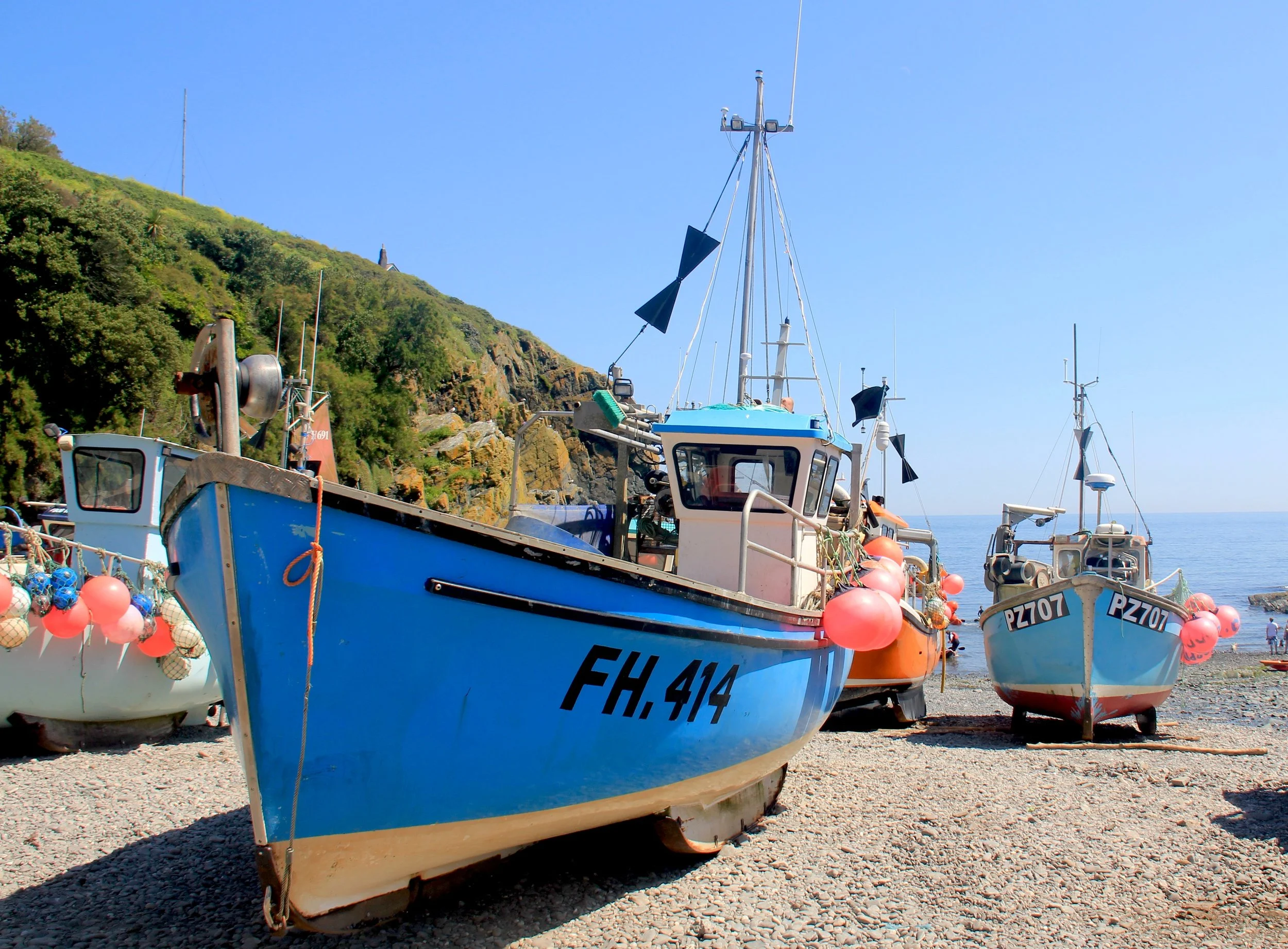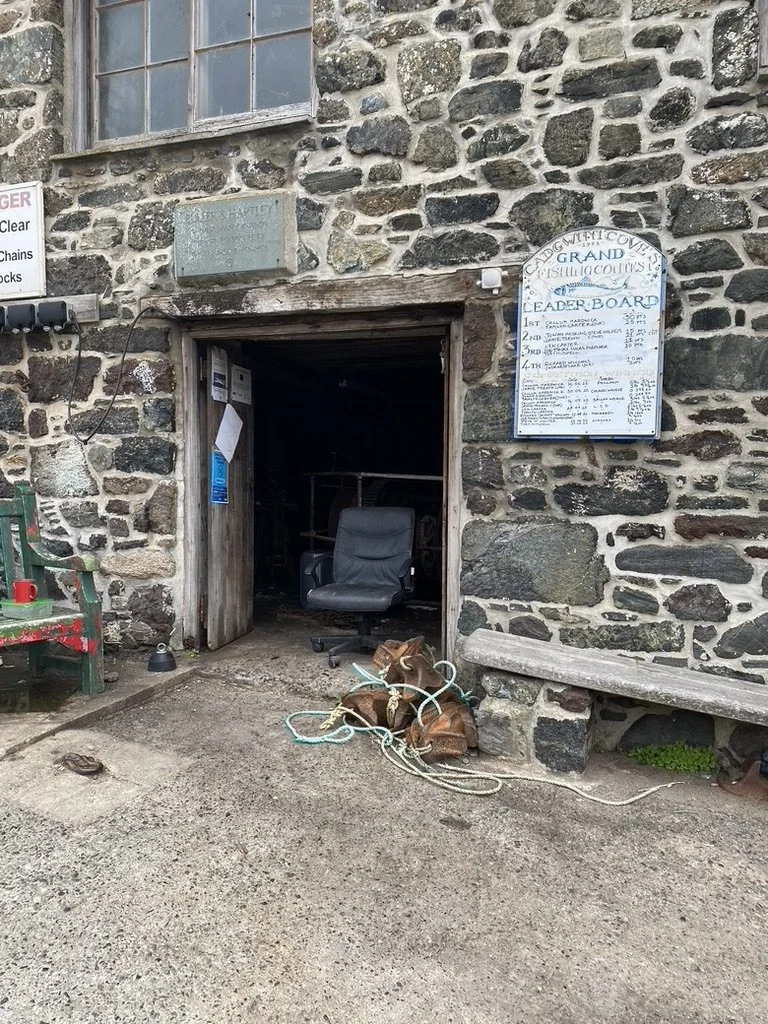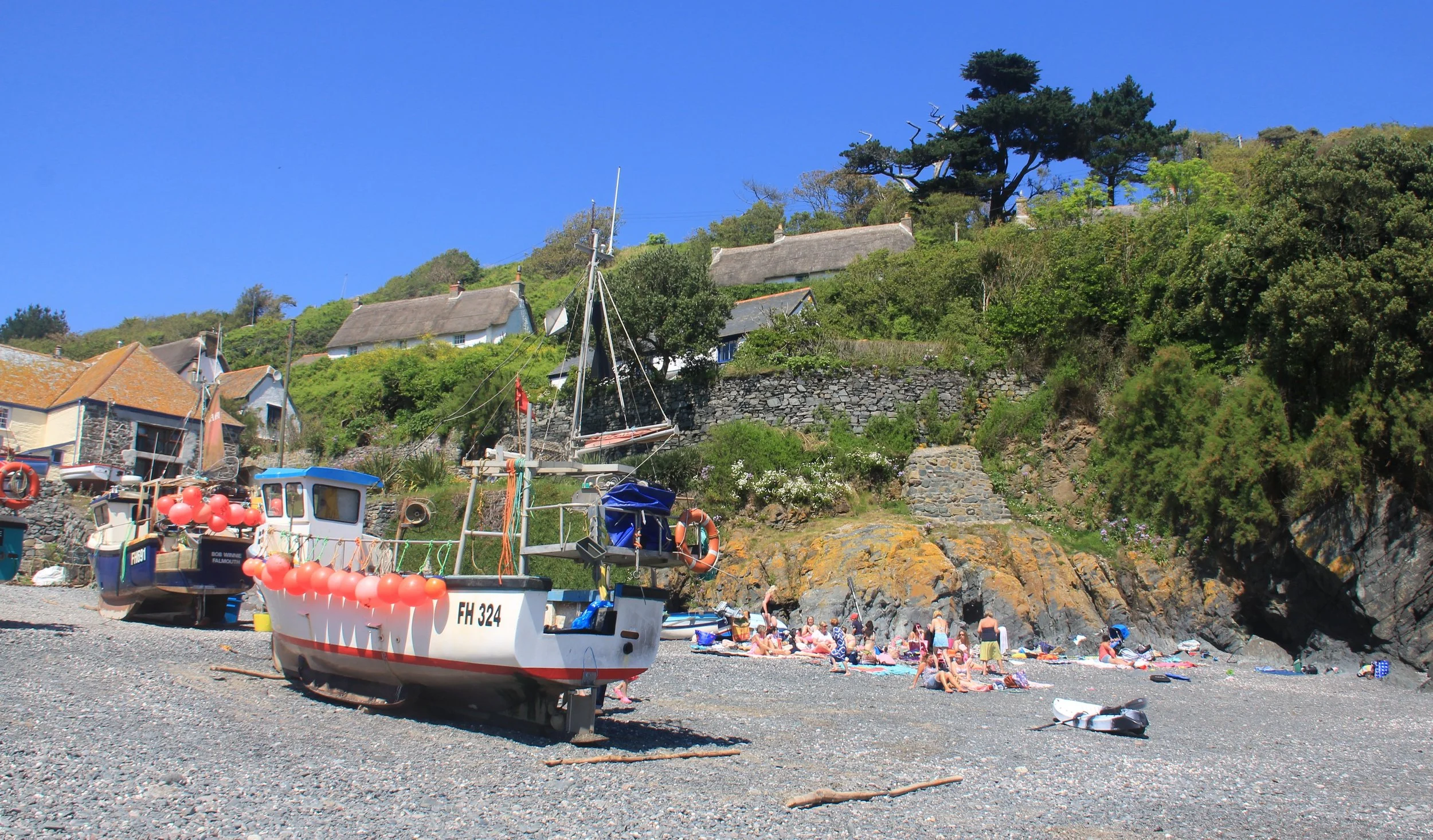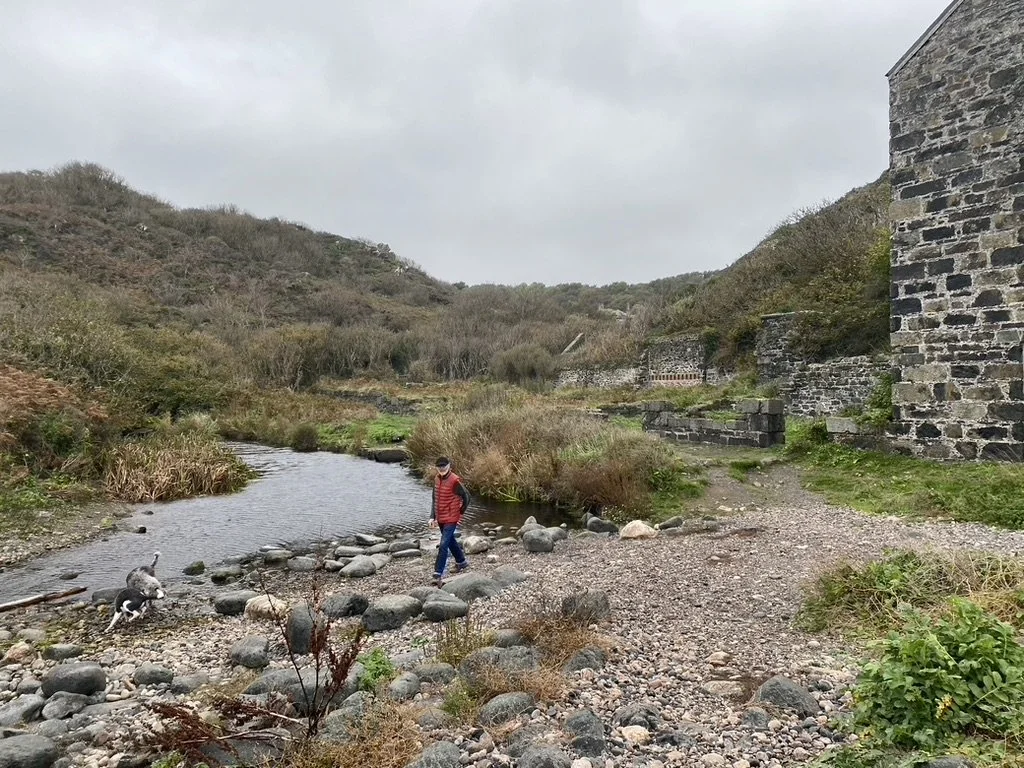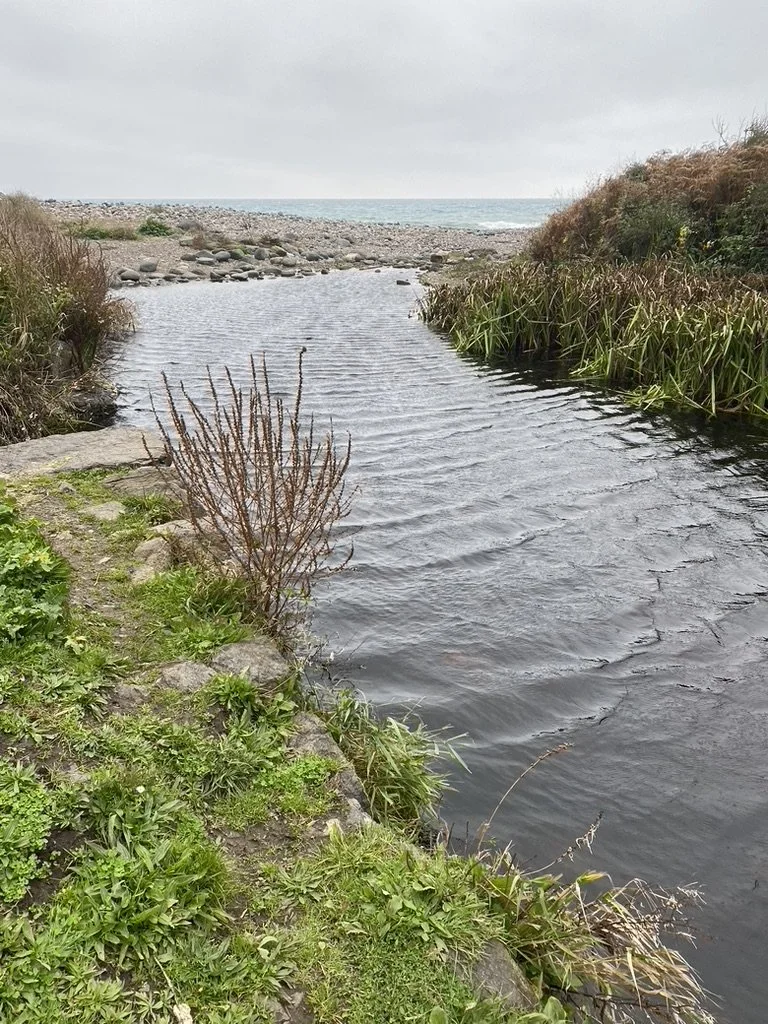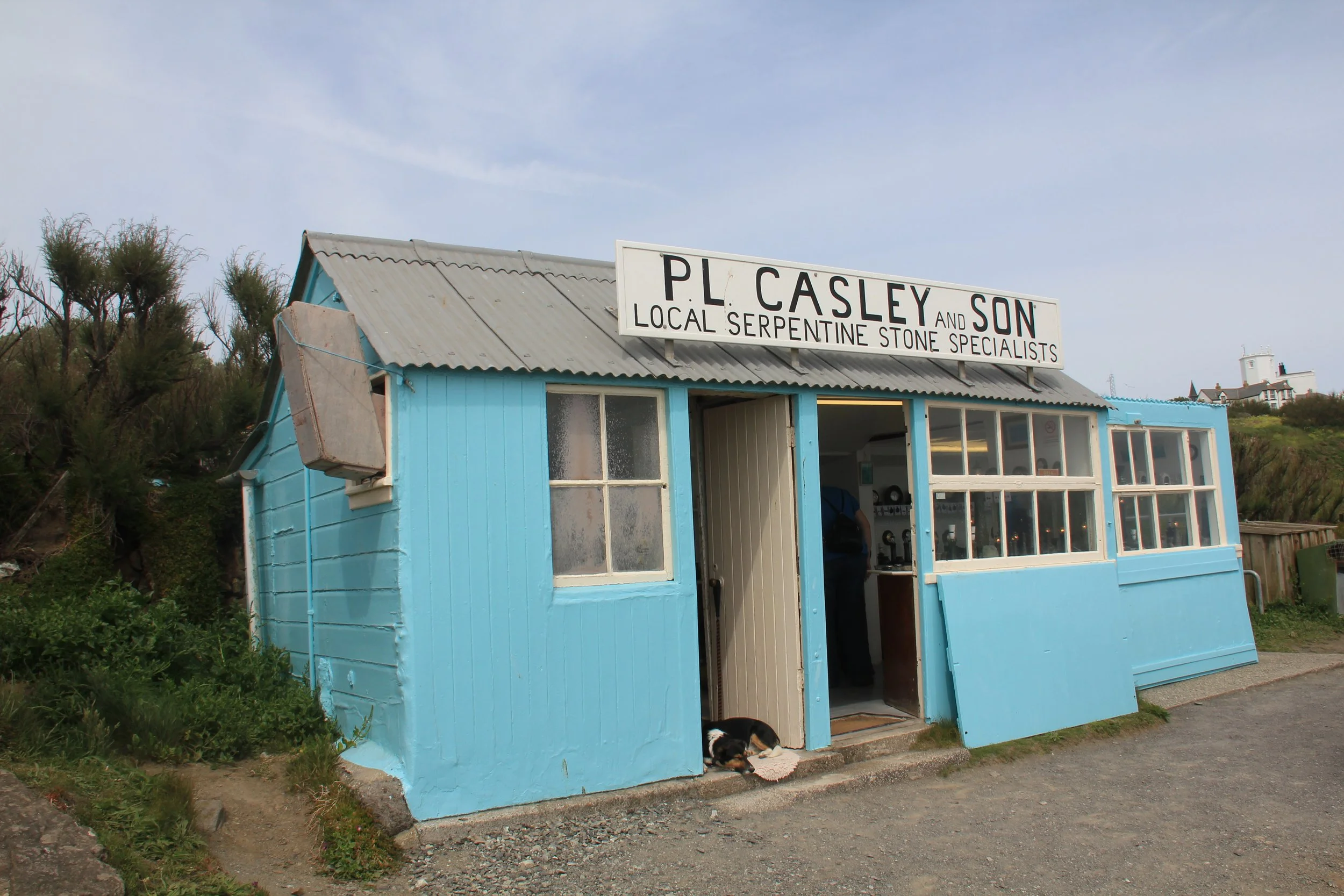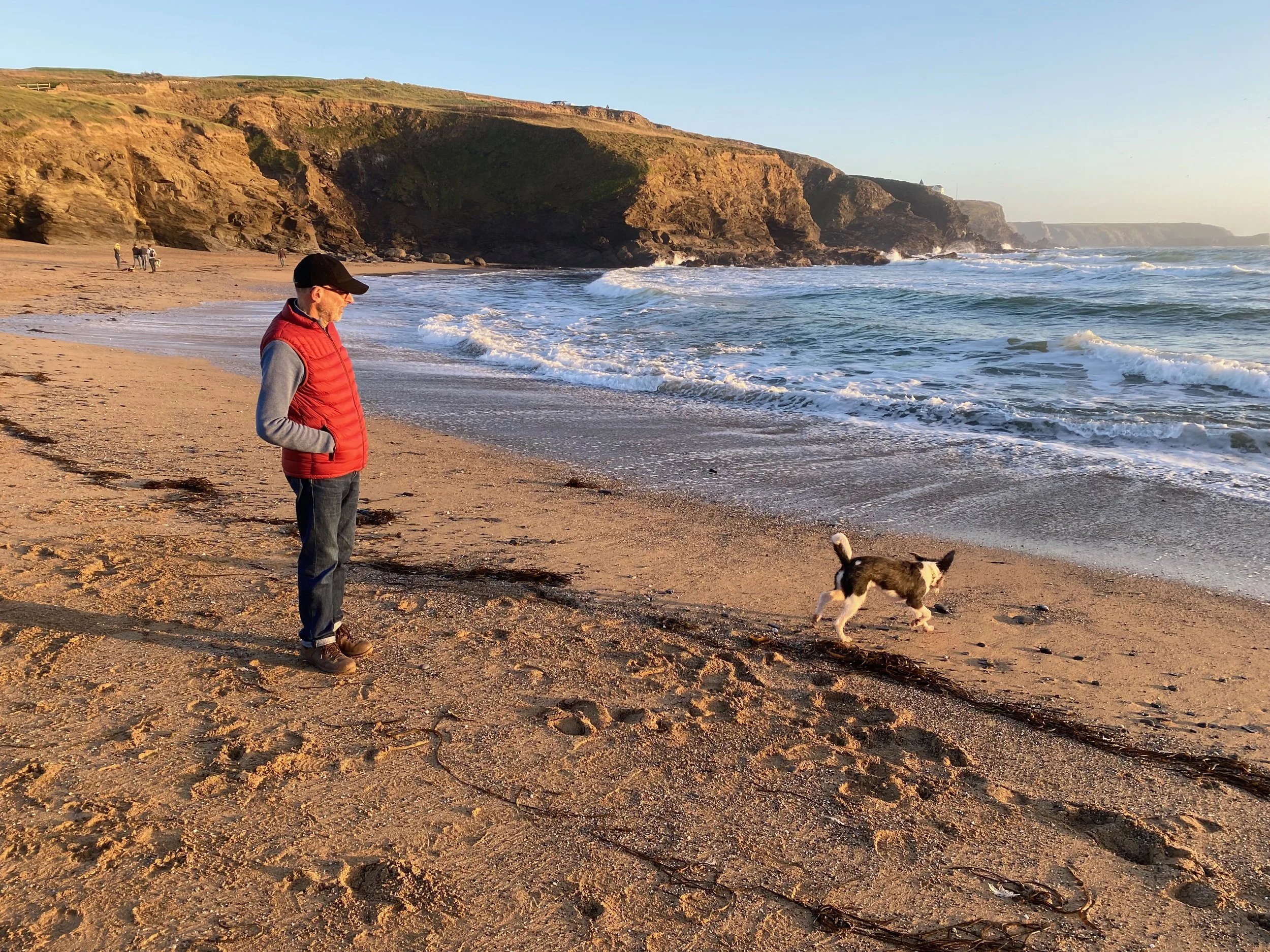Cornish Walks: Cadgwith - Poltesco
If there was a list of Very Special Places of the Realm kept, perhaps, in a velvet-lined drawer beneath the Crown Jewels, then humble, beautiful Cadgwith would undoubtedly be there scrawled on the parchment in finest copperplate.
Cadgwith morning
Cadgwith: not so much a harbour, more an indentation in the rocks. But what a wonderful indentation it is - enjoying a greater dalliance with the sun than any other place in the kingdom.
We were visiting the place last week during our stay at the amazing Mullion Cove apartments.
In the mornings the south-east facing valley, with its thatched cottages and clutter of fishermen's sheds, soaks up light from sky and sea like nowhere else I know. Light is everywhere: under your chin, in the fishermen's lofts, even in the gig shed where the doors leak the morning sun.
Cadgwith fisherman’s sheds
Well, at least it was the day we were there recently, as my photographs prove. We walked down to the village and sat there and even in the steely light of a cold November day we could admire the sheer colour of the spectacle. A Mediterranean blue sea spread a thousand dancing reflections upon the painted boats and the great jumble of highly coloured ephemera that all fishermen seem to collect about their stores. In the light of Cadgwith, even rust looks beautiful, let alone the ultra-marine hues of the ropes and tackle.
Cadgwith in high summer
The basis of this walk was a chance to grab an early lunch at the Cadgwith Cove Inn and after the repast we strolled up the narrow lane to Ruan Minor - the village which is located high above Cadgers on top of the escarpment..
Cadgwith panorama
It was a cold day. Very, very, cold. A thing so unusual in the autumn of 2015 that we felt in need of shelter and I happened to know where we could find some.
I’m talking about the National Trust owned Poltesco Valley that runs down to small but fascinating Carleon Cove. A few years ago I wrote about this place in a special series about special seaside places and had been surprised to find that the coombe was one of the most wooded places to be found down at the southern end of the Lizard. The other day a friend of mine wanted to take a closer look at the industrial archaeology there, so this walk seemed a perfect opportunity.
To reach it you must locate the narrow lane that branches off what passes for Ruan Minor’s main street immediately north of the church.
I apologise for the fact that so far this walk has been on paved public highways, but I promise - you won’t have to worry about meeting too many cars as you descend the steep winding lane into the Poltesco Valley.
Poltesco Valley and the old serpentine works
Eventually, at the bottom of the hill, the lane takes a sharp left and turns inland - but directly in front of you at this point you will see the National Trust’s car park and what looks to be an old farm but which is now in fact the land-owning charity’s local base of operations.
The trust has established a small network of paths around the valley which I was shown a couple of years back by head ranger Justin Whitehouse - so on this occasion I thought we’d branch off north along the coast path to round Polbream Point and continue on over Thorny Cliff so that we could reach Kennack Sands.
Looking out to sea at Carleon Cove
It is a very pleasant walk indeed, but I will admit that it is a bit of an annexe to the main circular walk. I had intended taking a few photos of the big combers and the surfers we saw on this rare South coast surfing beach - but by the time we got to Kennack the skies had darkened. So we retraced our footsteps back to historic
Carleon Cove which made a big name for itself in the 1800s because of its connections with the old serpentine industry.
Legend has it that back in the 1860s Queen Victoria and Prince Albert were sailing around the Lizard when Albert felt a bit seasick - so they came ashore at Kynance Cove and Albert bought a piece of turned serpentine.
Despite feeling ill, the prince took a liking to the stuff. For those who don’t know it, serpentine is metamorphic rock laced with dark green veins and dotted here and there with reds and whites. Not only is it attractive, but it is easily worked - and the story goes that Prince Albert bought some more items from the craftsmen he came across near Kynance, just a few miles away from the Poltesco Valley on the west coast.
At the time there was just a small industry working the stone. But suddenly it had royal approval and everybody in the kingdom wanted serpentine. As a result a factory sprouted up in this most unlikely of spots. It was open for about 40 years and churned out everything from chimney pots, coffee tables, fireplaces, and church fonts as well as countless little knick knacks.
Carleon Cove in October
The factory was placed at the bottom of the Poltesco Valley because of the fall of water - and a waterwheel was soon powering the heavy machinery necessary to turn huge quantities of the stone. There was hefty stone cutting equipment - a fact which is witnessed because huge boulders were moved here - strung above the river on aerial launders. They workers would have cut, shaped and polished them - and flat bottomed stone barges would have come in from the sea and moored up in the little river where today you will see naught but a shallow pond.
The industry faded as dramatically as it began. According to legend, Queen Victoria later went on holiday to Italy and discovered marble, which then became all the rage.
An old serpentine shed at the Lizard Point - not sure if it’s still there
A good job too, I say. If she hadn’t fallen for the pinks and pale colours of marble, serpentine would have remained in vogue and this place could now be a huge industrial site.
Instead, the Poltesco Valley and Carleon Cove are among the most peaceful parts of Southern Cornwall. Unlike Cadgwith - which became even more popular in recent times since Monty Hall based his excellent Fisherman’s Apprentice TV programme there.
To return to this busy jewel in Cornwall’s crown all we have to do is to head south along the coast path, round Enys Head and Kildown Point, and within a mile we’ll be round the headland which introduces us to Cadgwith Cove.


